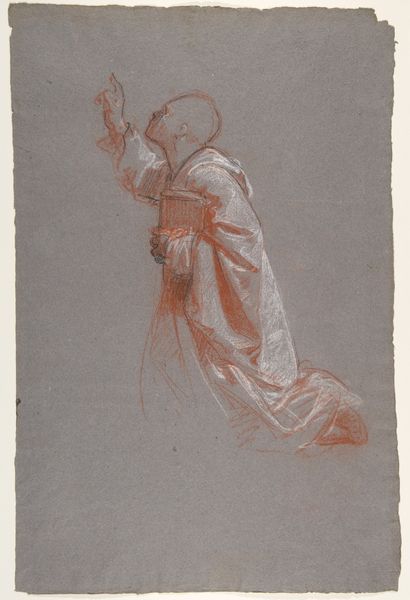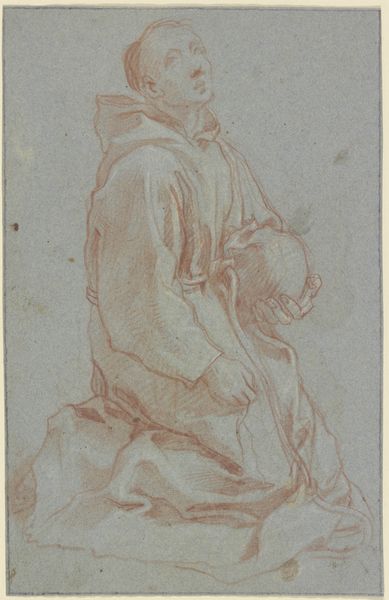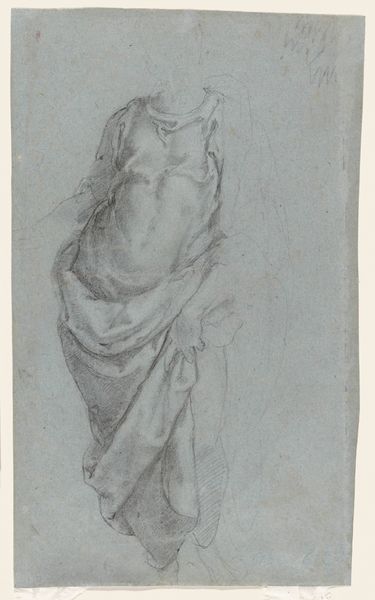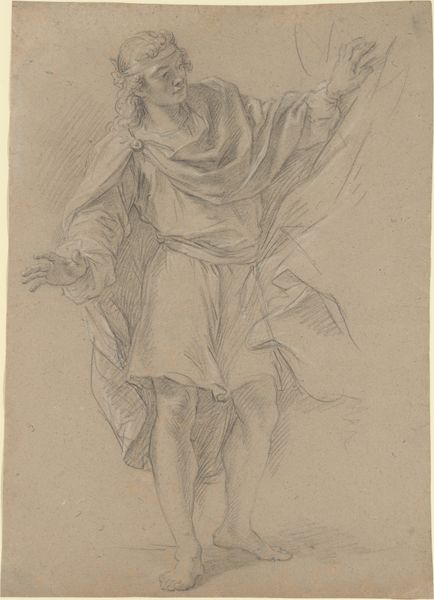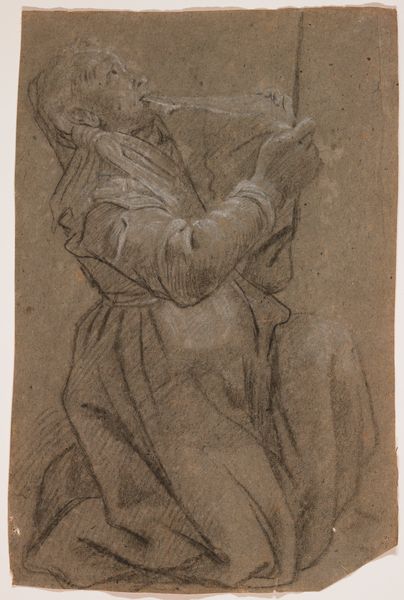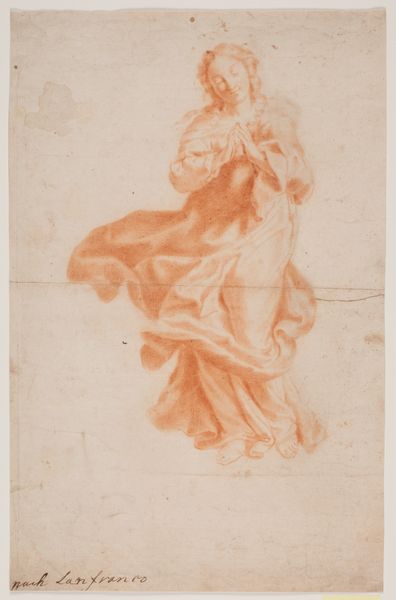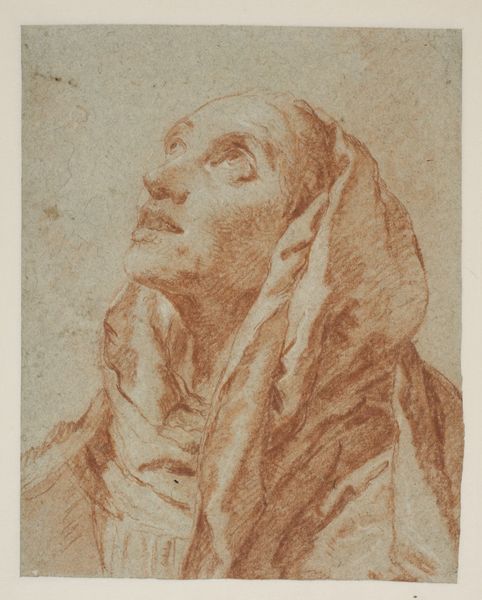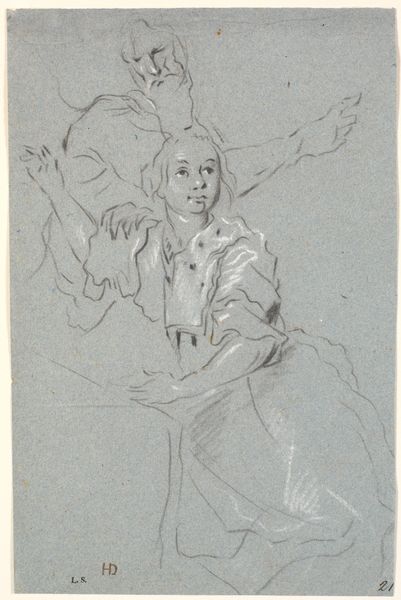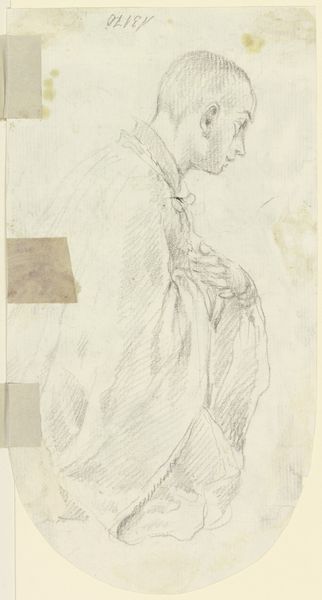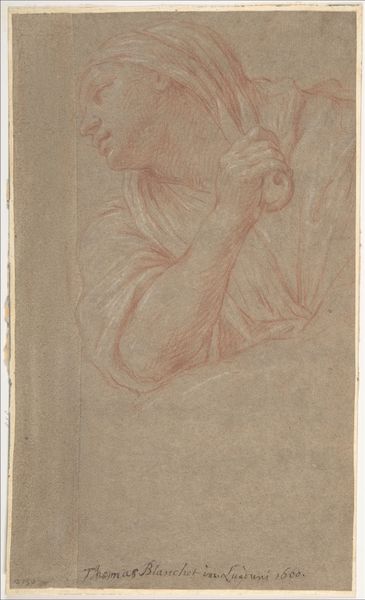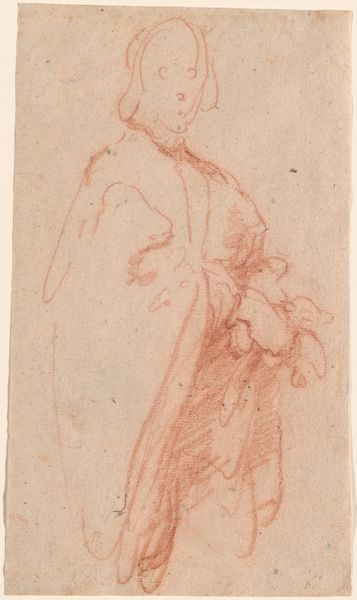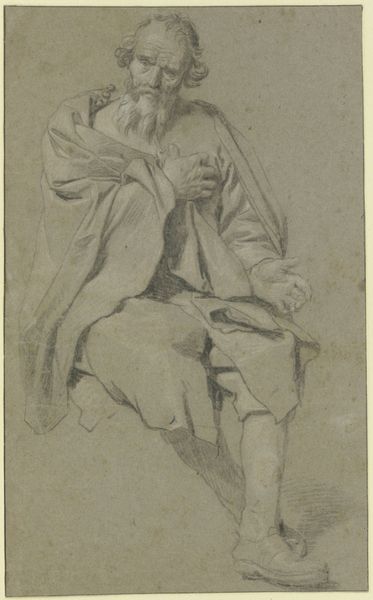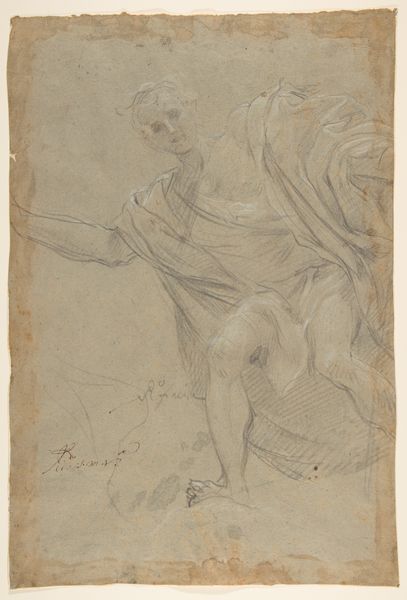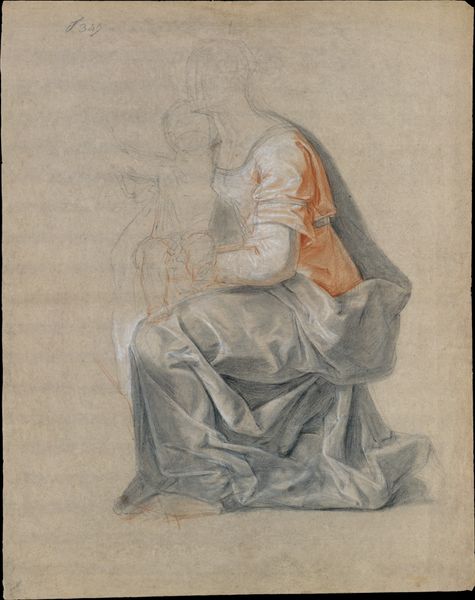
drawing, chalk
#
portrait
#
drawing
#
figuration
#
form
#
11_renaissance
#
chalk
#
italian-renaissance
Dimensions: overall: 14.8 x 13.6 cm (5 13/16 x 5 3/8 in.)
Copyright: National Gallery of Art: CC0 1.0
Editor: So here we have Bartolomeo Cesi's "A Boy Gazing Upward in Adoration," a chalk drawing from around 1594. It's really captivating; the way the artist captured that sense of longing in the boy's upturned face is striking. How do you interpret this work within its historical context? Curator: Well, looking at this from a social and institutional history perspective, what strikes me is how devotion was actively cultivated and portrayed during the Counter-Reformation. Think about the intense religious atmosphere and how art served to inspire piety. What effect does this idealized depiction of youthful devotion have on you, considering the period's emphasis on religious reform? Editor: I guess I see how the art might have aimed to instill certain values, maybe inspiring that fervor in other young people. But what about the choice of such a seemingly simple subject? Curator: Exactly! The focus on a single boy elevates the everyday into the divine. In Renaissance Italy, images, like this one, played a pivotal role in public devotion, even statecraft. Now, notice the technique, the chalk lines; they’re expressive, not overly polished. Why do you think Cesi opted for this raw approach? Editor: Maybe to feel more intimate? It brings a certain humanity to it. Like, less "untouchable saint," and more someone relatable. Curator: Precisely. Art patronage often intertwined with religious orders or individual wealth, further shaping the creation and reception of works like this. By considering those structures, we move closer to seeing not only beauty, but also political power at work. Editor: It’s amazing to think about how one image can encapsulate so much more than what’s on the surface. Curator: Agreed. And that's precisely what I learn in those conversations: that art is not created nor displayed in a vacuum; understanding art's role is a dance between the artwork, us and the environment where it was created, and the institutions that promoted it.
Comments
No comments
Be the first to comment and join the conversation on the ultimate creative platform.
